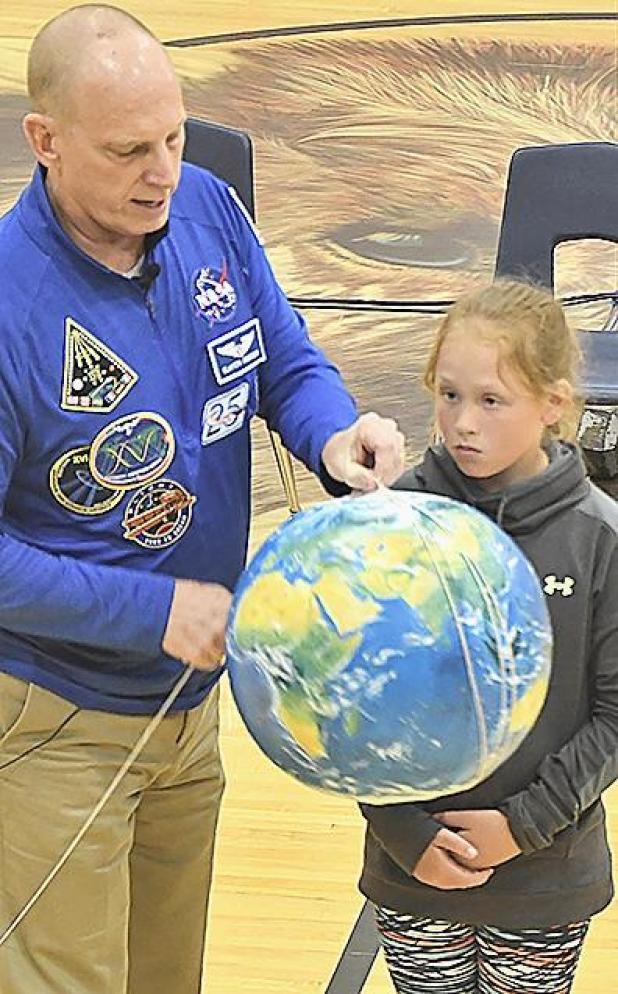
Clayton Anderson shows how many times you’d have to circle the earth to get to the moon as Ryleigh Johnson of Elsie assists. (Johnson Publications photo)
S.C.O.R.E. campers get hands-on learning from astronaut
Nebraska astronaut Clayton Anderson provided an afternoon S.C.O.R.E. program June 12 for all 1-6 campers and others in the Longhorn gym.
Using audience volunteers, he gave four demonstrations that taught important facts about space flight.
He didn’t have to ask more than once for volunteers, as hands shot up quickly.
His first group of volunteers demonstrated how a space shuttle cockpit is designed and who are in the seats. Students were placed in positions where the commander, pilot, mission specialist #1 (Anderson’s job) and flight engineer sat.
Another four students provided the visual for the space shuttle’s size, and also aided him in showing distances to the moon, Mars and how far the shuttle traveled into space.
Wrapping string around an inflated “earth” ball, he said you’d have to go around nine and a half times to equal the distance to the moon. To get to Mars, a shuttle would have to travel the equivalent of 1,962 times around the earth.
Two students tried to hit a trash can with a Frisbee. Anderson said the same concept is used to get a spacecraft to an asteroid—different approaches and angles have to be used.
“Computers are one aid we have today (to help), not there 50 years ago when we went to the moon,” he said.
His final demonstration represented how the shuttle’s rendezvous with the space station is completed. As one youth attempted to connect with a football “receiver” in motion and missed, Anderson explained that’s often how it works with a rendezvous, too.
To read more on this and other stories, please log in or subscribe to the digital edition. https://etypeservices.com/Imperial%20RepublicanID359/
